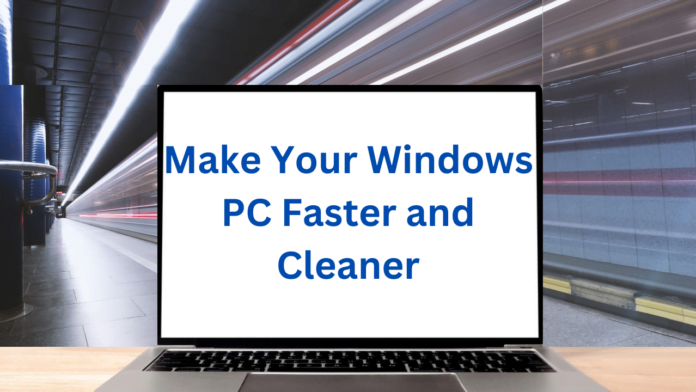Introduction
In our fast-paced digital world, a sluggish and cluttered Windows PC can impede productivity and hinder the overall user experience. If you find your computer running slower than usual, it’s time to take proactive steps to optimize its performance and cleanliness. This comprehensive guide will walk you through detailed, user-friendly steps to ensure your Windows PC operates at its best.
Step 1: Uninstall Unnecessary Programs
Over time, we tend to accumulate a plethora of programs that may no longer serve a purpose. Navigate to the Control Panel by right-clicking on the Start menu, click on “Programs,” and select “Uninstall a program.” Review the list and uninstall any software that you no longer need or use. This not only frees up storage space but also reduces the strain on your system resources.
Step 2: Disable Startup Programs
Many applications launch automatically when you start your PC, contributing to a longer boot time. Open the Task Manager (Ctrl + Shift + Esc), go to the “Startup” tab, and disable unnecessary programs. This simple adjustment not only accelerates your computer’s startup but also ensures that system resources are not unnecessarily tied up.
Step 3: Clean Up Your Hard Drive
A cluttered hard drive can be a major bottleneck for system performance. Utilize the built-in Disk Cleanup tool by searching for “Disk Cleanup” in the Start menu. Select the drive you want to clean, and let the tool remove temporary files, system cache, and other unnecessary files. This process not only frees up space but also contributes to a more efficient file system.
Step 4: Organize Your Files
An organized file structure is not only visually appealing but also plays a crucial role in system performance. Take the time to declutter your desktop and organize your files into logical folders. Consider moving large files to an external drive to keep your primary storage optimized.
Step 5: Run Disk Defragmentation
Disk fragmentation occurs as files are scattered across your hard drive over time. Running the built-in Disk Defragmenter helps rearrange these files for optimal performance. Search for “Defragment and Optimize Drives” in the Start menu, select your drive, and follow the prompts to defragment your hard disk.
Step 6: Update Your Operating System and Drivers
Keeping your Windows operating system and drivers up to date is crucial for optimal performance. Go to Settings, select “Update & Security,” and click on “Check for updates.” Regular updates not only provide essential security patches but also include performance enhancements that can positively impact your PC’s speed.
Step 7: Install a Reliable Antivirus Software
Malware and viruses can significantly slow down your computer. Ensure your PC’s security by installing reputable antivirus software. Windows Defender, included with Windows 10, is a robust option, or you can choose third-party alternatives like Avast or AVG. Regularly update and scan your system to keep it secure and running smoothly.
Step 8: Optimize Your Browser
For many users, a significant portion of computer usage involves web browsing. Over time, browsers accumulate cache and cookies, affecting performance. Regularly clear your browser’s cache, cookies, and browsing history. Consider using browser extensions like uBlock Origin to block unnecessary ads, enhancing both speed and security.
Step 9: Adjust Visual Effects for Performance
Windows comes with various visual effects that, while visually appealing, can consume system resources. Right-click on “This PC,” select “Properties,” click on “Advanced system settings,” and under the “Performance” section, choose “Adjust for best performance.” This disables unnecessary visual effects, providing a performance boost.
Step 10: Upgrade Your Hardware
If your PC still feels sluggish, despite implementing the above steps, consider hardware upgrades. Adding more RAM or upgrading to a faster solid-state drive (SSD) can significantly improve your system’s speed and responsiveness. While this step involves an investment, it can breathe new life into an aging computer.
Conclusion
By diligently following these detailed steps, you can transform your Windows PC into a lean, mean, and efficient machine. Regular maintenance, optimization, and thoughtful usage not only improve performance but also extend the lifespan of your computer. A well-tuned PC not only enhances productivity but also ensures a seamless and enjoyable computing experience. Take the time to implement these steps, and you’ll undoubtedly notice a significant improvement in your Windows PC’s speed and cleanliness.

